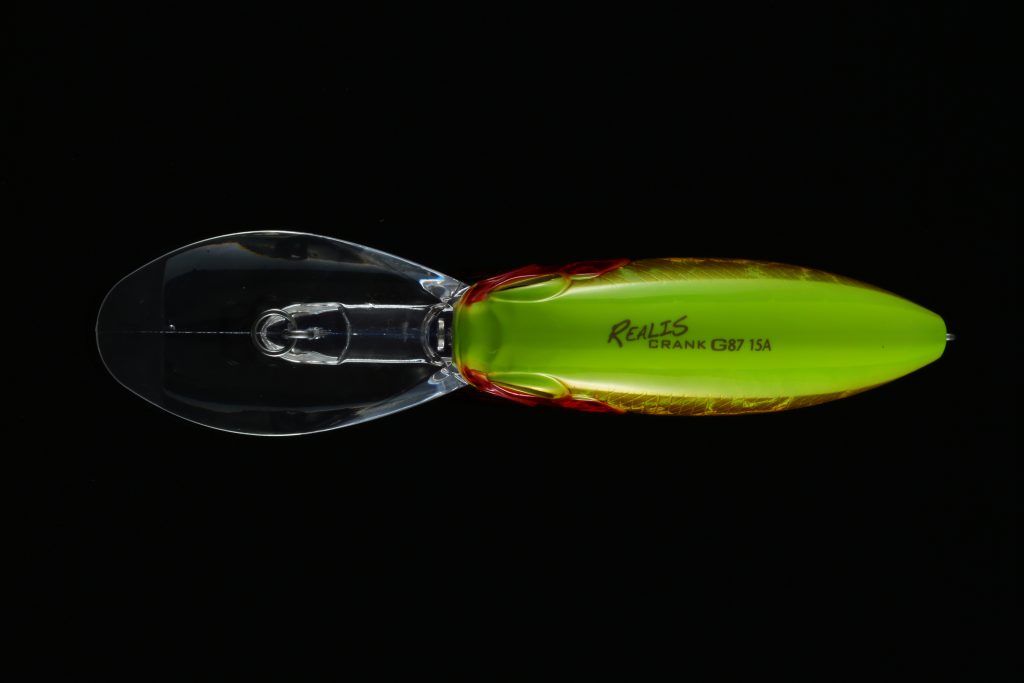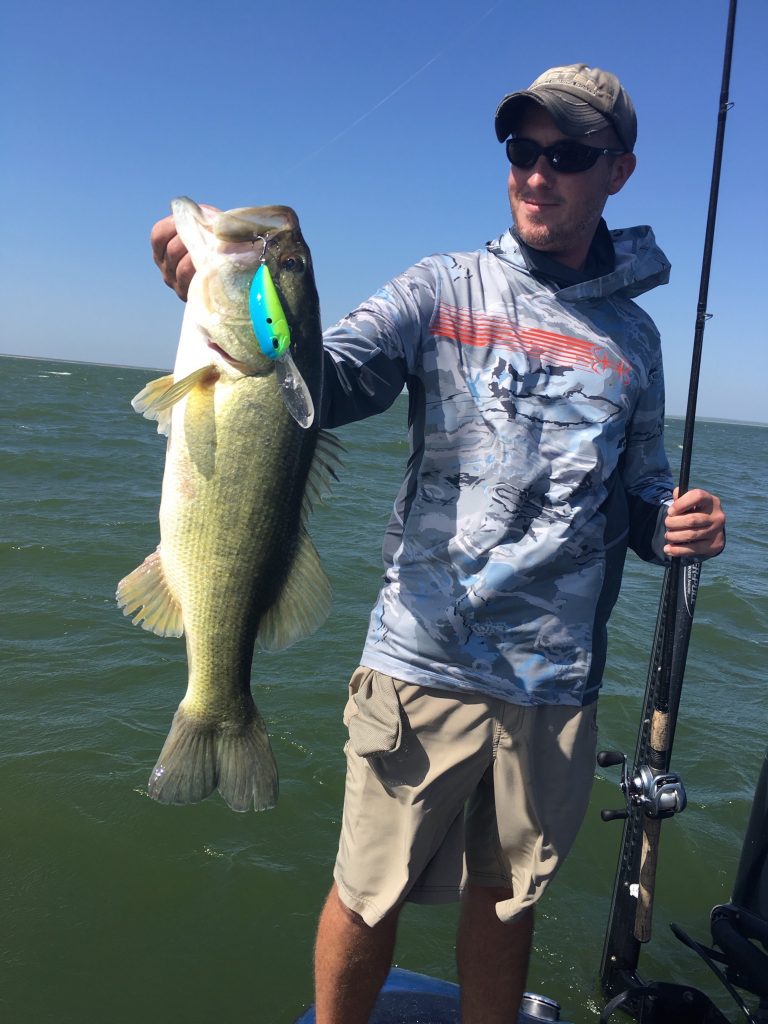 Summertime in Texas… Yep, it can get pretty hot. It doesn’t get much hotter than a midday deep cranking session. It’s the most physically strenuous technique in bass fishing. It may feel more like work than fishing. However, all is forgotten the moment you feel the head shake and a big bass has engulfed your crankbait.
Summertime in Texas… Yep, it can get pretty hot. It doesn’t get much hotter than a midday deep cranking session. It’s the most physically strenuous technique in bass fishing. It may feel more like work than fishing. However, all is forgotten the moment you feel the head shake and a big bass has engulfed your crankbait.
The fact of the matter is a deep diving crankbait has the power to trigger bites from bass that ignore other presentations, and it delivers big bites. This is why a deep-diving crankbait is one of the first tools I reach for in the summer for big fish.
It’s no mystery to me why deep cranking produces big sacks of fish consistently. Bigger bass are often duped by a “reaction presentation” of some sort. Whether it’s a lipless bait ripping through grass, a heavy jig falling in front of their nose, or a crankbait careening through their hangout, big bass are fooled when they make a hasty decision.
In deep cranking, there is always a “sweet spot”. It may be a rock or laydown log, but there is something down there that triggers a reaction when the crankbait deflects off of it. Often, it takes the perfect cast, at the perfect angle, to unlock an area’s true potential. When that precise spot and angle are pinpointed the crankbait can do things I believe nothing else will.
When approaching summertime fishing, we are looking at typical deep structure such as points, humps, and roadbeds. I rely on my graphs to tell me whether the fish are present. Once that is established, I like to make a few casts with a crankbait to try and “fire up” the school. Getting that first bite can lead to triggering a frenzy of activity. I find that I get more bites paralleling the structure with the crankbait, as opposed to casting from deep to shallow or vice versa.
 I never throw a crankbait if I can’t reach the bottom with one, or make contact with some form of cover. For instance, we will occasionally see bass suspended in tree tops that are well beneath the surface. Even if I’m in 35 feet of water, if the top of that tree is in a crankable depth I will still try to hit the branches with my crankbait. Nearly every bite I can recall that I’ve had cranking has been while my lure is making contact with something. Therefore, if the fish are suspended and I can’t bang the crankbait against something near them, there are probably better lure choices.
I never throw a crankbait if I can’t reach the bottom with one, or make contact with some form of cover. For instance, we will occasionally see bass suspended in tree tops that are well beneath the surface. Even if I’m in 35 feet of water, if the top of that tree is in a crankable depth I will still try to hit the branches with my crankbait. Nearly every bite I can recall that I’ve had cranking has been while my lure is making contact with something. Therefore, if the fish are suspended and I can’t bang the crankbait against something near them, there are probably better lure choices.
When I do hit something with my crankbait, I like to hit it hard. I want to wake up whatever lives down there. That is why I use a 7.2:1 ratio, high-speed reel. I know that kind of goes against the old school logic of low geared, slow retrieve reels for deep cranking. Yes, using a lower speed ratio takes a little torque off of the forearm, but I feel like I get bigger bites with a fast retrieve. My typical retrieve is nearly as fast as I can turn the handle.
The perfect cranking reel for me is the Shimano Curado. I like it because it has a large spool capacity which is important for long casts. My favorite thing about the Curado is that it will cast a crankbait a mile. The biggest challenge in deep cranking is getting the lure out far enough to get it down to the desired depth. I pair the Curado with a G. Loomis Deep Flex Crankbait rod. I use the 7’5” heavy action. It’s a stout rod for cranking but has an incredible parabolic bend. This helps with casting as well as landing fish. I normally use 15lb fluorocarbon line, occasionally stepping down to 12lb test if I need to get a little deeper.
 We have been fortunate over the past several years to have some important advancements in lure design available. Crankbaits are diving deeper than ever. There was a time hitting that 20′ depth was the Holy Grail of cranking. These days it’s not unusual to be digging bottom in 25′ or deeper with the right equipment. My deep crank of choice is the Duo Realis G87. There is a deep model (15A) and an extra deep model (20A). I honestly believe it’s a game changer when it comes to crankbaits. Japanese engineering at it’s finest.
We have been fortunate over the past several years to have some important advancements in lure design available. Crankbaits are diving deeper than ever. There was a time hitting that 20′ depth was the Holy Grail of cranking. These days it’s not unusual to be digging bottom in 25′ or deeper with the right equipment. My deep crank of choice is the Duo Realis G87. There is a deep model (15A) and an extra deep model (20A). I honestly believe it’s a game changer when it comes to crankbaits. Japanese engineering at it’s finest.
The G87 has a built in magnetic weight transfer system. I could go into detail about how it works, but I’ll just put it this way: I can cast it 30% further than any other crankbait on the market. It casts like a bullet, even into the wind. It gets down deeper with less effort as well. These crankbaits are available here on the lake. Both, Lake Fork Marina and Oak Rdge Marina are fully stocked with the models and colors I use.
Next time you’ve marked a few fish, but can’t get them to bite the jig, carolina rig, or spoon, try knocking on their door with a crankbait. Sometimes I see my customers cringe when I break out the deep divers. Yes, it may seem too much like work to some, however it’s a valuable tool that definitely has a place in our pursuit of big bass.